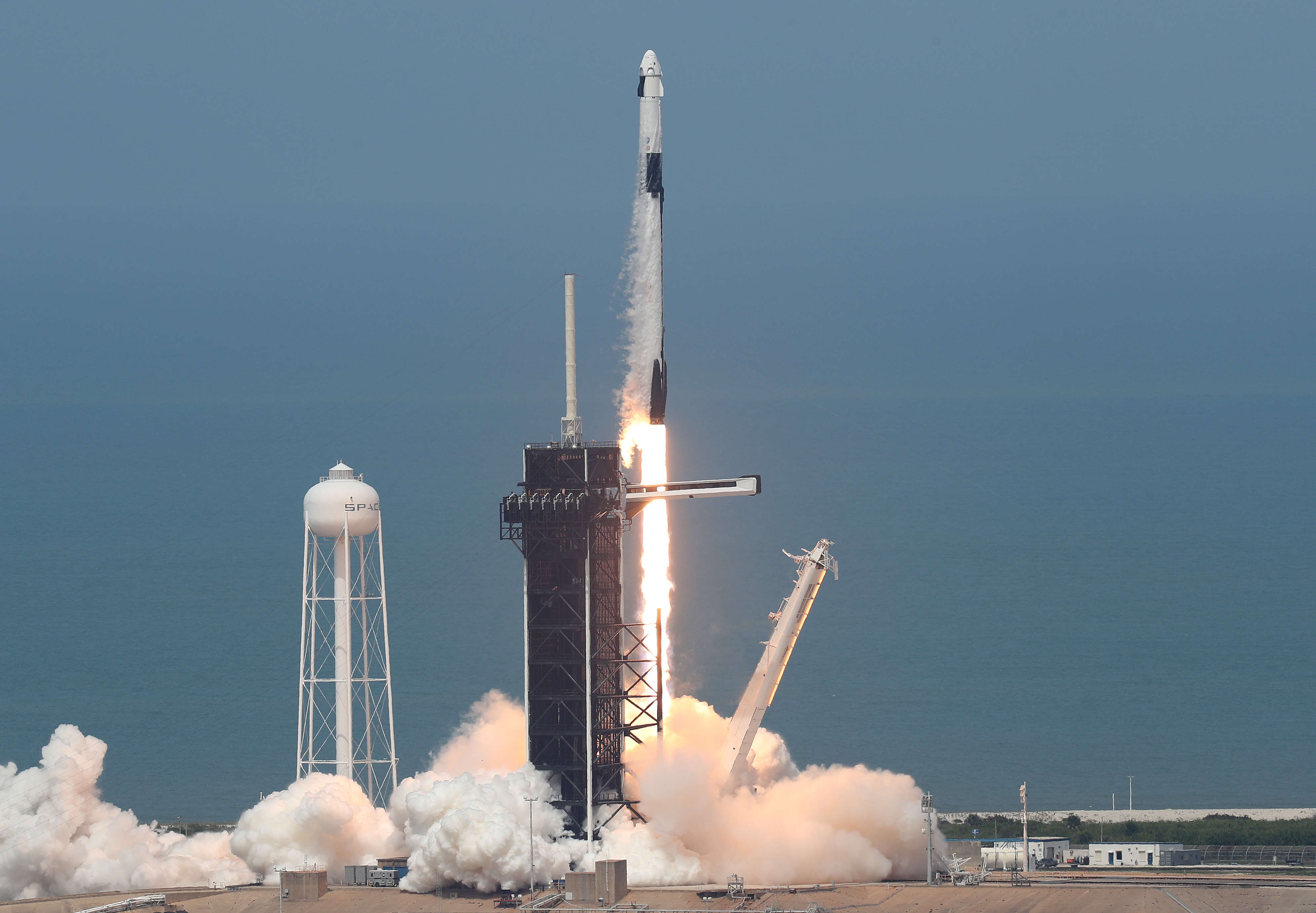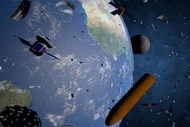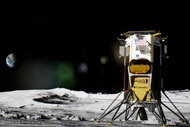Create a free profile to get unlimited access to exclusive videos, sweepstakes, and more!
Astronauts explain why SpaceX launch felt like 'riding a dragon' to International Space Station

The historic flight of SpaceX's Crew Dragon — the first manned U.S. launch in nearly a decade — has reached the International Space Station, and now its NASA astronaut pilots are giving space fans an inside look at their trip. Now safely aboard the ISS, Bob Behnken and Doug Hurley explained that the ride off-world was different from what the seasoned spacefarers expected.
Basically, the whole "Fasten your seatbelts, it's going to be a bumpy night," quote from All About Eve applied quite pointedly to the previously delayed launch. According to Space.com, the pair explained that the source of the difference on their 19-hour flight was the type of fuel — which led to a wide gap in experiences as the craft went up. Whereas the first stage was nice and smooth, the second part of the ride was a little wild.
"We were surprised a little bit at how smooth things were off the pad," Behnken said. "The space shuttle was a pretty rough ride heading into orbit with the solid rocket boosters. And our expectation was, as we continued with the flight into second stage, that things would basically get a lot smoother than the space shuttle did."
However, because of the disparity in fuel type, things were a little rocky on that rocket. "The Falcon 9 is a liquid fueled rocket. Remember, the shuttle had solid rocket boosters to start with. Those burned very rough for the first two and a half minutes," Hurley explained. "The first stage with Falcon 9 were the nine Merlin engines ... and it was a much smoother ride, obviously, because it was a liquid engine ascent at that point."
Basically, Hurley said, think of the Ron Howard film Apollo 13 "where they staged from first to second stage." There's a time gap between the phases of the flight. "So the first stage engine shut off, and then it takes a second — almost a second, might have been less than that — but it seemed like it took some time between the booster separating and then the Merlin vacuum engine starting," the astronaut said. "At that point we go from roughly three Gs to zero Gs for, I don't know, half a second probably. And then when that Merlin vacuum engine fires, then we start accelerating again for the next five, six minutes until we achieve orbit."
And that acceleration was tough — especially when its passengers were expecting smooth sailing. "But Dragon was huffing and puffing all the way into orbit, and we were definitely driving or riding a dragon all the way up," Behnken said. "It was not quite the same ride, the smooth ride, as the space shuttle was up to MECO [main engine cutoff] — a little bit less Gs but a little bit more alive is probably the best way I would describe it."
And yes, there's been a development on the craft's toilet: Hurley used it and said that the secretive system "works very similar to the one we were used to in the space shuttle, and it worked very well. We had no issues with it." Space waste was thankfully not a problem.
The Crew Dragon duo don't know how long they'll be up in the ISS, as their mission still has an undetermined end date, but they'll surely have just as much to share about the return journey when they pile back into their pod to head home.














